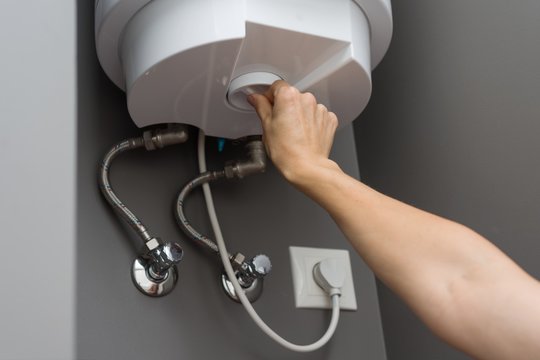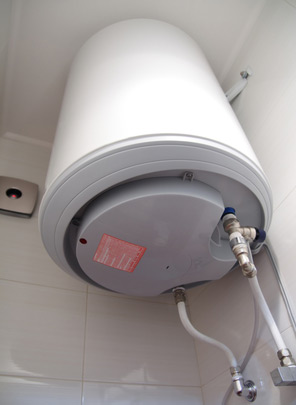Efficient Techniques for Maintaining Your Home's Hot Water SystemEffective Techniques for Caring for Your Home's Hot Water SystemTop Ways to Maintain Your Home's Hot Water System Successfully
Efficient Techniques for Maintaining Your Home's Hot Water SystemEffective Techniques for Caring for Your Home's Hot Water SystemTop Ways to Maintain Your Home's Hot Water System Successfully
Blog Article
They are making a few good observations regarding What Kind of Maintenance Do Water Heaters Need? in general in the content following next.

Hot water is vital for daily comfort, whether it's for a revitalizing shower or washing meals. To ensure your warm water system runs efficiently and lasts longer, normal upkeep is key. This post gives practical suggestions and understandings on how to maintain your home's warm water system to stay clear of disruptions and expensive repair work.
Introduction
Keeping your home's hot water system may appear daunting, yet with a few straightforward steps, you can guarantee it runs smoothly for many years to find. This overview covers everything from comprehending your hot water system to do it yourself upkeep tips and knowing when to call in expert assistance.
Value of Preserving Your Warm Water System
Normal upkeep not only prolongs the life expectancy of your warm water system but also ensures it runs successfully. Disregarding maintenance can result in reduced performance, greater power bills, and even premature failing of the system.
Indicators Your Warm Water System Demands Upkeep
Recognizing when your hot water system needs interest can avoid significant concerns. Keep an eye out for indicators such as irregular water temperature level, weird noises from the heater, or rusty water.
Understanding Your Hot Water System
Before diving into maintenance tasks, it's useful to comprehend the fundamental elements of your warm water system. Normally, this includes the water heater itself, pipes, anode rods, and temperature controls.
Regular Monthly Maintenance Tasks
Routine regular monthly checks can assist catch minor problems prior to they rise.
Purging the Hot Water Heater
Purging your hot water heater gets rid of debris build-up, boosting performance and lengthening its life.
Monitoring and Changing Anode Rods
Anode rods avoid corrosion inside the tank. Inspecting and replacing them when broken is critical.
Evaluating and Readjusting Temperature Level Settings
Adjusting the temperature setups makes certain ideal performance and security.
DIY Tips for Upkeep
You can execute a number of maintenance tasks on your own to maintain your warm water system in top condition.
Looking for Leakages
On a regular basis examine pipes and links for leaks, as these can result in water damage and higher bills.
Testing Stress Alleviation Valves
Checking the stress safety valve guarantees it functions appropriately and protects against extreme pressure build-up.
Protecting Pipes
Shielding hot water pipes lowers warm loss and can save power.
When to Call an Expert
While DIY upkeep is beneficial, some issues call for expert knowledge.
Facility Problems Requiring Specialist Assistance
Instances include significant leaks, electric issues, or if your water heater is consistently underperforming.
Regular Expert Maintenance Conveniences
Expert maintenance can consist of complete inspections, tune-ups, and making sure compliance with safety and security standards.
Verdict
Routine maintenance of your home's warm water system is necessary for effectiveness, longevity, and price savings. By following these ideas and knowing when to look for professional aid, you can make sure a dependable supply of warm water without unforeseen disruptions.
Water Heater Maintenance: The Basics
Maintaining your water heater will ensure it operates efficiently and has a longer lifespan. Neglecting regular maintenance can lead to costly repairs and an even bigger chunk of your savings if you have to replace it sooner than necessary. But there’s good news: Most water heater maintenance tasks are relatively simple and easy for homeowners with basic DIY skills.
Flush the Water Heater
Over time, sediment and minerals can build up in the tank, reducing its efficiency and potentially causing damage. To flush the tank, turn off the power or gas supply, attach a hose to the drain valve near the bottom and open the valve to drain the water until it runs clear. Ideally, flush the tank annually.
Replace the Anode Rod
The anode rod is a sacrificial metal rod that helps prevent corrosion inside the tank. Inspect and replace it every three to five years or per the manufacturer's recommendation. To replace the anode rod, turn off the power or gas supply, drain a few gallons of water from the tank, unscrew the old rod and replace it with a new one. If the anode rod is significantly corroded or covered in calcium buildup, it's a sign the water heater may need to be replaced soon.
Tune-Up
A yearly tune-up can help identify potential issues and ensure your water heater operates at peak efficiency. This typically involves checking the thermostat, burner assembly (for gas heaters) and any other components specified by the manufacturer. During a tune-up, the technician may also clean the burner and adjust the pilot light (for gas heaters) or examine the heating elements (for electric heaters).
How to Maintain Your Water Heater
Insulate the tank. Insulating the tank can improve energy efficiency and reduce heat loss, saving you money on energy bills. You can purchase precut insulation blankets designed specifically for water heaters or use standard fiberglass insulation wrapped securely around the tank. Check the temperature. The recommended water temperature for most households is around 120 degrees Fahrenheit (49 degrees Celsius). Higher temperatures can increase energy costs and potentially cause scalding. Use a kitchen thermometer to check the temperature at the faucet nearest the water heater. Monitor water pressure. Excessive water pressure can strain the water heater and cause leaks or even tank failure. Install a pressure-reducing valve if necessary. The ideal water pressure range is between 60 and 70 PSI (pounds per square inch). Test the temperature and pressure (T&P) relief valve. The T&P relief valve is a safety feature that releases pressure if the tank gets too hot or the pressure builds up too high. Test it annually by lifting the lever and allowing a small amount of water to release. Replace the valve if it doesn't release water or reseal properly. Check for leaks. Regularly inspect the tank, pipes and fittings for leaks or corrosion. Deal with issues promptly to prevent further damage. Even a small leak can lead to significant water damage over time. Consider a tankless water heater. If your traditional tank-style water heater is nearing the end of its lifespan ( typically 10 years), consider replacing it with a tankless water heater. These units heat water on demand, reducing standby energy losses and potentially saving you money on your energy bills. Schedule professional maintenance. While homeowners can perform many water heater maintenance tasks, it's still a good idea to schedule professional maintenance every few years. A plumber or HVAC technician can thoroughly inspect the unit, identify potential issues and ensure it operates safely and efficiently. https://www.homeserve.com/en-us/blog/home-improvement/hot-water-heater-maintanence/

As a fervent reader about Water Heater Maintenance Tips You Can't Afford to Forget, I thought sharing that information was really helpful. Sharing is good. Who knows, you could be doing someone a favor. Thank you for being here. Kindly stop by our website back soon.
Schedule Service Now Report this page